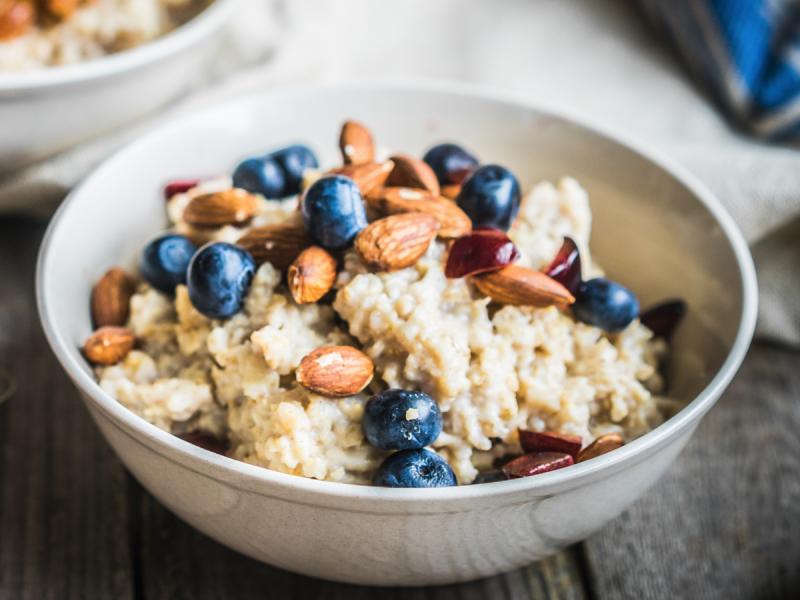Q. What foods are good for keeping your cholesterol down?
Oatmeal contains soluble fiber that reduces your low-density lipoprotein (LDL), the bad cholesterol that can increase your risk of heart attacks and strokes. This type of fiber is also found in such foods as kidney beans, brussels sprouts, apples, pears, barley and prunes.
There are other foods that work against cholesterol. These include soy protein, walnuts and fatty fish. Soy protein is found in tofu, soy nuts, soy milk and soy burgers. Walnuts can significantly reduce cholesterol and may also help keep blood vessels more healthy and elastic. Omega-3 fatty acids in fish are noted for lowering triglycerides, another form of fat in your blood. The highest levels of omega-3 fatty acids are in mackerel, lake trout, herring, sardines, albacore tuna and salmon. Other good sources of omega-3 fatty acids include flaxseed, walnuts, canola oil and soybean oil.
Of course, if you’re a geezer and you plan to make a change in your habits that could affect your health, it is recommended that you consult your doctor first.
Q. What is the most popular drug in the USA?
Caffeine. About 90 percent of Americans consume caffeine daily. More than half of all American adults consume more than 300 milligrams of caffeine every day. Caffeine occurs naturally in many plants, including coffee beans, tea leaves and cocoa nuts. It is therefore found in a wide range of food products. Caffeine is added artificially to many others, including a variety of beverages. The most common sources of caffeine for Americans are coffee, tea, colas, chocolate and some over-the-counter medications.
Here are some useful numbers to help you determine how much caffeine you take in:
A 6-ounce cup of coffee - 100 mg
A 6-ounce cup of tea - 70 mg
A 12-ounce can of cola - 50 mg
An ounce of chocolate - 6 mg
One tablet of Extra Strength Excedrin - 65mg
One tablet of Anacin - 32 mg
One tablet of Maximum Strength NoDoz - 200 mg.
For most people, 200 to 300 milligrams a day aren't harmful. But, if you are sensitive to caffeine, you may want to cut down or eliminate caffeine from your diet.
Q. How long has marijuana been used medicinally?
Marijuana refers to the dried leaves, flowers, stems, and seeds from the Cannabis sativa plant, which has been used for medicinal purposes for more than 4,800 years. Doctors in ancient China, Greece and Persia used it as a pain reliever, and for gastrointestinal disorders and insomnia.
Cannabis as a medicine was common throughout most of the world in the 1800s. It was used as the primary pain reliever until the invention of aspirin. One of marijuana's medical uses is for the treatment of nausea. It can lessen mild to moderate nausea caused by cancer chemotherapy, and help reduce nausea and weight loss in people with AIDS.
Glaucoma increases pressure in the eyeball, which can lead to vision loss. Smoking marijuana reduces pressure in the eyes. Your doctor can prescribe other medications to treat glaucoma, but these can lose their effectiveness over time.
















































